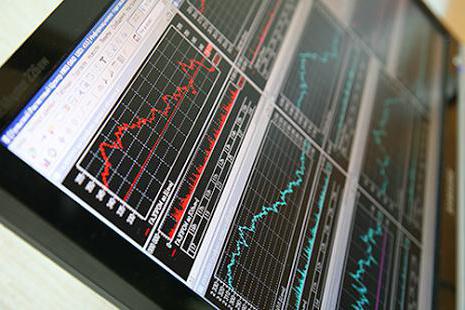The profit on coupon bonds combines two options: temporary payments and the difference in the exchange rate between the formed value and the face value. Such bonds can be characterized by several points on profit: coupon, current profit at the time of receipt and full, when it comes to yield to maturity. In this article, we consider the liquidity of securities.
Coupon profit
Coupon yield is formed during the bond issue period and depends on the corresponding interest rate. Its size is determined by two factors: the period of the bond loan and the issuer's solvency. If the maturity of the bond is significant, then the risk is large enough, which means that a large rate of return is required, which the investor requires to compensate. Along with this, the issuer's reliability, which determines the credit rating of the loan, is very important. The state is the most reliable borrower, which explains that the coupon rate among federal-level loan bonds is most often lower than bonds of subjects of the Russian Federation and municipalities.
But what is the liquidity of securities?
The most risky securities
Corporate bonds were recognized as the most risky. At a fixed rate, the coupon profit is known in advance and does not change throughout the entire circulation period. But it happens that a bond is bought or sold between a pair of coupon payments. When analyzing the yield, the value of income generated by the coupon rate in relation to the date of purchase or sale of the bond is important for the seller, as well as for the buyer.
Reliability and liquidity of securities have been analyzed for a long time.
How to calculate profits?
In order for the bargaining operation to become profitable for the seller, the amount of the coupon income must be divided between the participants in the transaction, which, in turn, must be proportional to the time period of the bond storage between the two payments. The part of the coupon profit due to the participants in the transaction can be calculated according to the exact and ordinary interest scheme. What is obtained as a result of such calculations is part of the coupon profit that the seller has the right to claim. During the storage period, the recipient can exercise the right to acquire income by including the amount of accumulated interest income in the value of the bond.
How to calculate the liquidity of securities? About it below.
Minimum Settlement
Suppose that a seller purchased a bond at face value, in this case, its selling rate, which ensures that part of the coupon income is proportional to the storage period, can be calculated by the formula: K = (N + NKD): 100. In this case, K is the price. Selling a bond at a value in excess of K will bring additional profit to its seller.
Assessing the liquidity of securities is very important.
Alternative way to calculate coupon income
It is possible to consider the situation on the contrary, when the price is below the value of K. In this case, the holder will suffer losses that will be associated with a shortage of part of the coupon income, which will determine the shelf life of the bond. So, the part of the coupon income that is due to the one who buys can be calculated according to the following scheme.
The first option involves calculations taking into account the amount of accumulated interest income (ACI) at the time of the purchase / sale transaction: CF - ACI = N + CF - P, where P is the purchase price.
The second way is the calculation of the definition of VAT from the moment of receipt until the due date for payment of the bond.It is easy to see that the calculated value (K) emphasizes the equilibrium situation. This means that both the buyer and the seller both acquire their share of the coupon income.
Change in profitability depending on market price fluctuations
But it happens that on some days the situation in the bond market is straightened exclusively in favor of sellers, or only lucky for buyers. The current yield of traded bonds may vary depending on fluctuations in their prices in the market. But from the moment of acquisition, profit becomes a fixed figure only because the coupon rate is not subject to change. It becomes clear that the profit from the bond at a particular point in time, which is acquired at a discount, will be an order of magnitude higher than the coupon, and that which is obtained with a premium, on the contrary, will be lower.
In parallel with this, the value of the yield effective at a particular moment will not take into account the second part of the bond income, namely the exchange rate difference between the repayment and the purchase price. This explains the fact that such a value will not be used to compare the profit of investment in bonds with all sorts of initial conditions.
We consider the liquidity of bank securities below.
Coupon Bonds Meter (YTM)
For example, the value of profitability to maturity (from English yield to maturity - YTM) is used as a unit of the total return on investment in bonds. This yield is the interest rate that establishes a balance between the value for the period of receipt of payments on the PV bond and the market price P. By its value, the YTM maturity rate expresses the internal measure of the return on investment (from the English internal rate of return - IRR). Nevertheless, the real amount of the bond’s profit in relation to redemption will become equal to YTM only if conditions such as
- firstly, the bond is held to maturity;
- secondly, coupon income is instantly reinvested in the form r = YTM.
It is indisputable that regardless of the wishes of the investor, the second example is rather difficult to put into practice. The decisions below provide data on calculating the yield to maturity of a bond, which is purchased during the period of issue at a par value of one thousand rubles, with further repayment after two decades and a coupon rate of eight percent, which is paid only once a year, at different reinvestment rates.
So, when calculating the liquidity of the securities portfolio, it turns out that with a decrease in the r value, the YTM value will also decrease, and with an increase in r this figure will increase. The size of the YTM indicator is directly affected by the price of the bond itself. Interestingly, there is an inverse relationship. Thus, we can define general rules that express the relationship between the current yield Y, coupon rate k, YTM maturity and, of course, the market price of bond P: when P> N, k> Y> YTM; and P The YTM would be more correct to designate as a fully predictable yield to maturity. Ignoring the inherent flaws in it, we can conclude that this value is almost the most popular measure of coupon bond profits from those that are used in practice. Its values are usually full of all published financial reports, as well as analytical reviews. Liquidity of government securities is quite high. Bonds with an indefinite coupon yield vest its holders with the right to periodically acquire interest income. Against this background, it becomes possible to issue a discount if the purchase price of bonds (at the first placement, or at subsequent auctions) becomes lower than the price of their sale. This also applies to the redemption of bonds, given their face value. According to OFZ-PK, the volumes of each coupon are considered right before the start of the corresponding coupon period of time, based on the profitability of the issues of state security bonds which repay simultaneously with the date of payment of such a coupon. The yield and liquidity of a security are analyzed by the Central Bank. At the time of the coupon on OFZ-PC, the Central Bank of the Russian Federation calculates the following: To calculate the profitability of HCBOs, the minimum auction price or a different cut-off price is used, due to which competitive bids from the auction are executed. In addition, they use the weighted average price, which is equal to the turnover of HCBO in relation to the total number of bonds participating in transactions. The Central Bank of the Russian Federation has proposed a methodology for determining the profitability of HCBs in relation to redemption, according to which they began to distinguish the elementary and profitable rates of return of HCBOs to maturity. In the role of the value of bond P, the average auction price could be applied, as well as the price of the final transaction at the auction, by which the necessary indicator was determined. Thus, this value demonstrates the success of investing in GKBO both at the auction and at the secondary auction, given that the investor holds bonds until they are redeemed. In addition to profitability, the most important value for efficiency is the liquidity of the securities market. Against this background, small issues of GKBO / OFZ are regarded by market players mainly as a means of managing the liquidity of their portfolios, acting at a particular moment, which contributes to the fact that the rates on these bonds become more volatile in the interval up to a month. Considering that the state is interested in increasing the duration of the debt and lowering the cost of its servicing, the actual ways to saturate the market with small instruments seem to be the creation of a separate move for coupons and denominations of their bonds (the so-called stripping). The implementation of such functions allows the Ministry of Finance of the Russian Federation, without increasing the real size of state domestic debt and not reducing the time for its servicing, to create long-term borrowings, and at the same time to offer all market participants the use of short-term instruments. There are certain factors of liquidity of securities. Liquidity is a temporary indicator, it depends on a number of factors. For example, it is affected by the size of the purchase or sale package. In addition, it is determined by price factors - the so-called "spread". Spread - the difference between the cost of buying a share and the cost of its sale. For highly liquid securities, it is very low - about 0.5%. The latest liquidity indicator is the number of professional stock exchange dealers who determine their own security quotes. The presence of a certain reserve of securities in them increases their liquidity. Another indicator of the liquidity of a security is the volume of purchase and sale transactions with it, which is assessed every day. But there is a liquidity risk for securities. As part of the expansion of the range of functions for circulating government bonds in the market, it becomes the most attractive, which leads to an increase in its liquidity. In addition, in order to maintain the mobility of players, in the open market of government bonds, together with the Central Bank of the Russian Federation, the trading system is taking measures to develop a full range of operations, namely, a modified exchange repo and inter-dealer repo. On the other hand, lowering rates and increasing the easy-to-sell government bonds makes it possible for their issuers to borrow on the domestic market using more favorable conditions, which allows directing the attracted resources to early redemption of Eurobonds. Thus, the cost of servicing the country's external debt and its repayment is reduced. We reviewed the liquidity of securities.
Calculation of the Central Bank
Liquidity as a key indicator

Liquidity factors
Liquidity risks

Conclusion